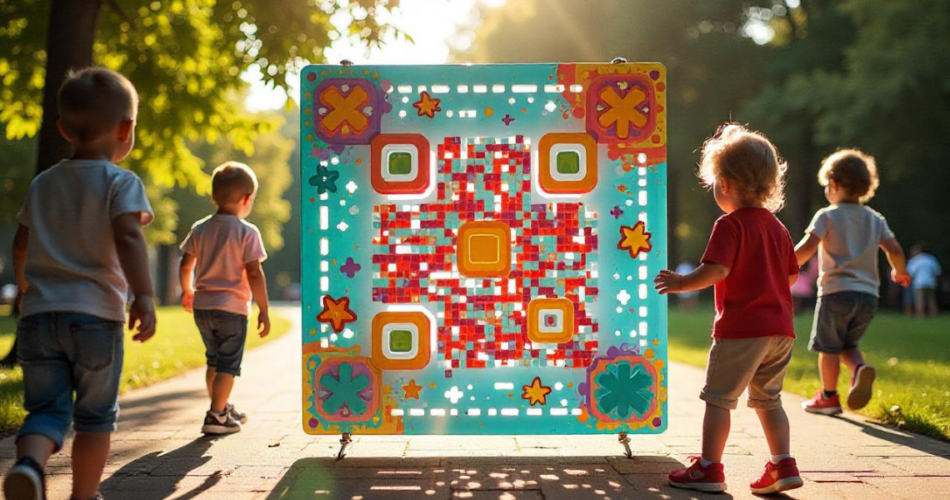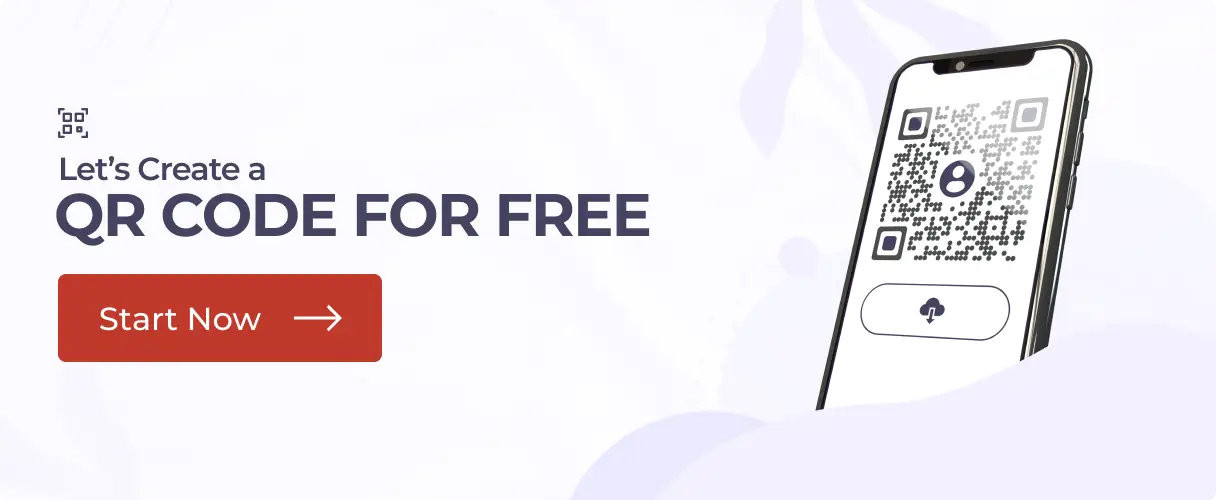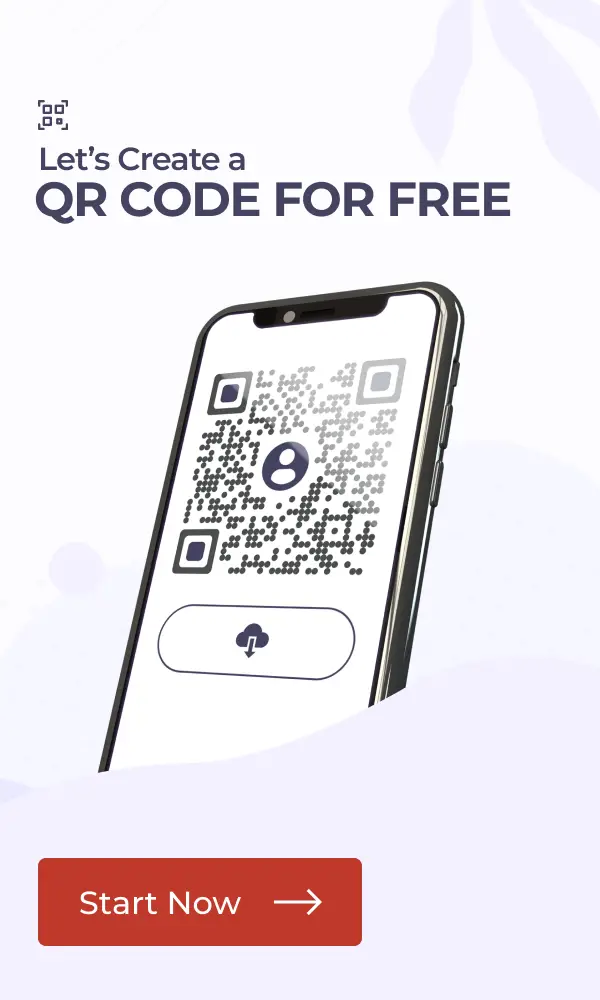In a nutshell: A QR Code lucky draw replaces paper slips with a quick digital scan, making participation easy and error-free. It helps organizers collect entries in real time, boost engagement, ensure fairness, and cut costs. You can create one in minutes using Scanova: build a form, link it to a QR Code, customize it, and share it across packaging, posters, or online channels. Real-world campaigns from brands like Coca-Cola, Poppi, and Britannia show how QR Code contests attract attention, build trust, and delight participants.
Ever hosted a lucky draw that turned into chaos? Piles of paper slips, messy handwriting, and endless manual sorting often take the fun out of what should be an exciting activity.
Participants get frustrated, organizers get overwhelmed, and the whole experience feels outdated.
In fact, a report by HubSpot found that 45% of people are more likely to engage with brands offering interactive experiences like contests or giveaways. And a lucky draw, when done right, is one of the simplest ways to boost engagement.
As Philip Kotler, the father of modern marketing, famously said: “The best advertising is done by satisfied customers.” Running a seamless, transparent lucky draw can turn participants into enthusiastic advocates.
This is where QR Code lucky draws come in, a modern, digital way to collect entries, cut the chaos, and make the experience exciting for both organizers and participants.
In this article, we’ll discuss everything you need to know about QR Code lucky draws. Let’s begin.
A. What is a QR Code lucky draw?
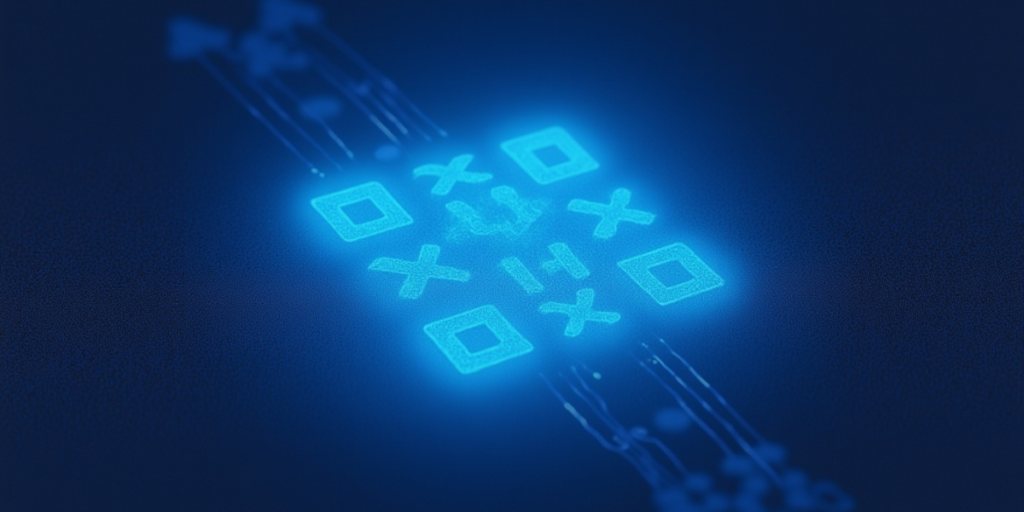
A QR Code lucky draw is a digital version of the classic “drop your name in a box and wait for the winner to be announced.”
Instead of filling out paper slips, participants simply scan a QR Code using their smartphone. The code links them to an online form, landing page, or campaign microsite where they can enter their details. Once submitted, their entry is securely stored in a database, ready for the draw.
Think of it as a modern twist on the traditional raffle, but instead, it’s faster, cleaner, and more engaging.
Whether it’s a retail store giveaway, a product launch contest, or a college fest, a QR Code makes it easy for people to participate on the spot.
In short, it’s a paperless, hassle-free lucky draw that saves time for organizers and makes the process more exciting for participants.
B. Benefits of using QR Codes for lucky draws
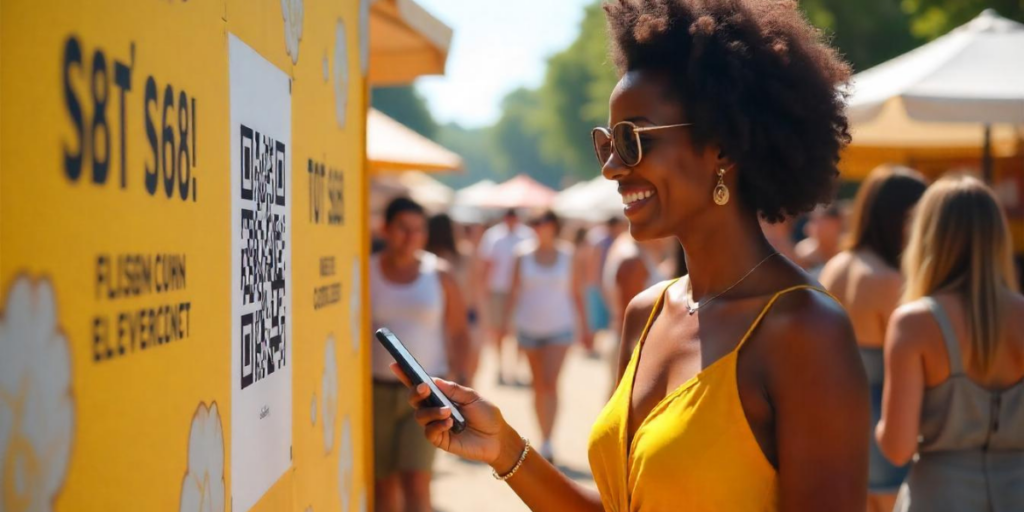
Switching from a traditional lucky draw to a QR Code-powered one isn’t just about saving paper. It transforms the entire experience, for both participants and organizers. Here’s how:
1. Effortless participation for users
Think about the old way: find a pen, write your details on a tiny slip, and hope it doesn’t get lost. With a QR Code, all someone needs is their phone. They scan, type their name and contact info, and they’re done.
This frictionless process means more people are likely to enter, especially younger audiences who expect things to be digital.
2. Real-time entry collection and tracking
Instead of collecting hundreds of slips in a box and sorting through them, QR Code entries are automatically stored in a database or spreadsheet.
Organizers can view entries live, track participation numbers, and even export the list instantly. This is especially useful if you’re running multiple draws at once (say, across different store branches).
3. Higher engagement and visibility
A QR Code adds an interactive layer that grabs attention. Imagine a poster at a mall that says: “Scan to Win an iPhone 15!” People stop, scan, and enter within seconds.
Because it feels more dynamic than filling a form, participation spikes. Some brands even add gamification, like redirecting participants to a spin-the-wheel page after scanning.
4. Eco-friendly and cost-efficient
Lucky draws traditionally mean paper slips, printed forms, and lots of waste. QR Codes cut that out. They’re reusable, need no extra printing once designed, and align well with eco-conscious branding.
For companies running frequent promotions, the cost savings in printing and manpower are significant.
5. Transparency and fairness
One big pain point of physical draws is trust; people often wonder if the selection was truly random.
With a QR Code system, entries are digital, timestamped, and easy to randomize with online tools. Organizers can even project the randomizer live to show participants that the process is fair.
6. Works anywhere, online or offline
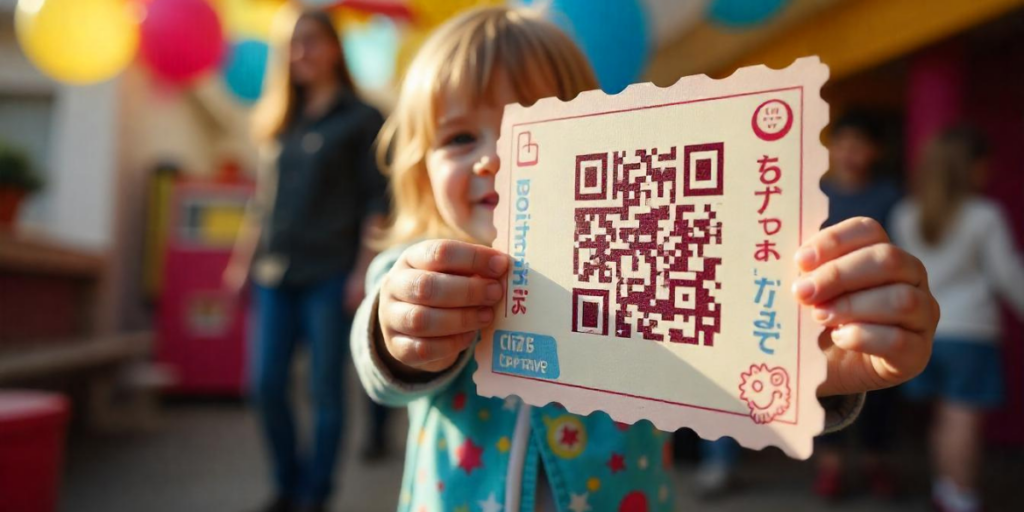
QR Codes bridge the gap between physical and digital. Place them on banners, receipts, flyers, or packaging, and people can enter instantly.
Or share them digitally or through a social post to let remote participants join too. This flexibility lets organizers scale their lucky draws beyond just on-site attendees.
7. Security and customization options
Dynamic QR Codes allow organizers to prevent duplicate entries (for example, limiting one entry per device).
You can also add branding, like company logos and colors, so the lucky draw feels professional and credible. Some tools even allow password protection or OTP-based verification to ensure entries are genuine.
8. Share event details
If you’re planning on organizing an event for the lucky draw, you’d like to give the event details to the participants.
This could include an event itinerary, images, video, and a lot more. An event QR Code can help you do just that.
It allows you to add an event description, images, video, website link, and social sharing buttons, and even helps you get guests to RSVP.
Yes, they do not need to email you or give you a call to do the job. They simply need to press a button on the landing page confirming their call or email.
9. Gather feedback
Getting feedback is always important to improve your services. It helps you know what went right and where you can make improvements.
However, getting participants to submit their feedback is not easy. They usually need to follow a long list of procedures to access the feedback form and finally fill it out.
But just like getting registrations, QR Codes can help you get feedback seamlessly. Simply create one and put it inside your premises, on the template of invoices, or your promotional material.
10. Drive web traffic or social media followers
Do you have a website? It could be to provide information about the lucky draw, give discounts, or get people to register for the draw. And you’d want people to visit it.
A Website URL QR Code can help you do that. Just create one and place it on print media promotions. Your target audience can scan it to visit your website in no time.
In addition, you can also offer them an easier way to follow you on social media via a Social Media QR Code. As end-users scan it, they’ll be redirected to a page with buttons for all your social media accounts. They can then select their favorite platform to follow you online.
C. How to create a QR Code Lucky Draw (step by step)
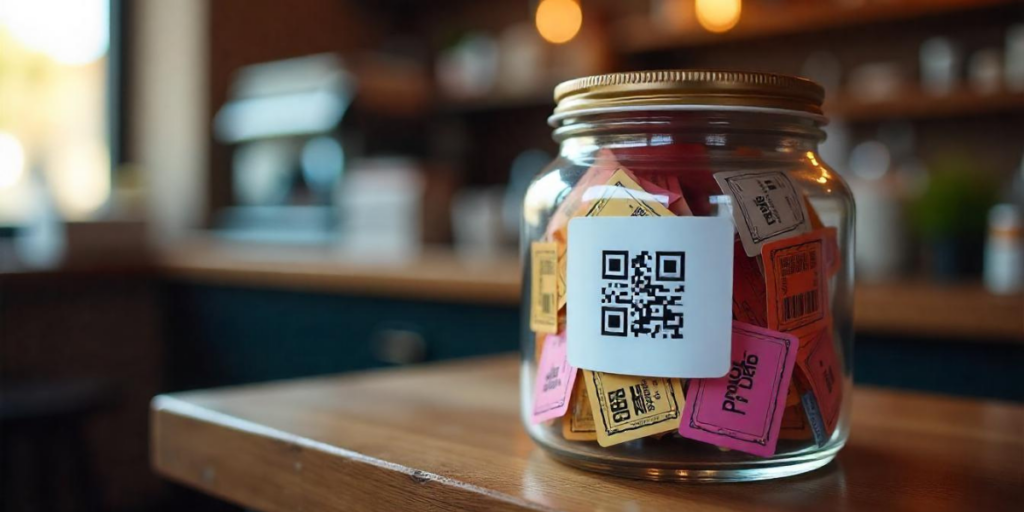
Running a QR Code lucky draw is simpler than it sounds. The process can be broken into two parts: how it works in practice, and how you can set one up yourself.
1. How it works (the flow)
- Participants see the QR Code on posters, packaging, event tickets, or social media posts
- They scan the code with their phone’s camera
- The code takes them to an online form or landing page where they fill in their name, email, or other details
- Their entry is stored automatically in a database or spreadsheet
- The organizer runs the lucky draw by randomizing the entries and announcing the winner, either live or later
2. How to set it up (step by step)
Here’s how you can create one yourself using a QR Code generator like Scanova:
Step 1: Set up your entry form or landing page
- You can use Google Forms, Typeform, or even Scanova’s Custom Page QR Code feature to collect participant details. You can learn more about how to set up a Custom Page QR Code here
- Keep the form short (name + one contact detail is enough) to encourage more entries
Step 2: Generate your QR Code
- Go to Scanova, select the relevant QR Code category (e.g., Website URL QR Code or Custom Page QR Code)
- Paste the form link or create a custom entry page
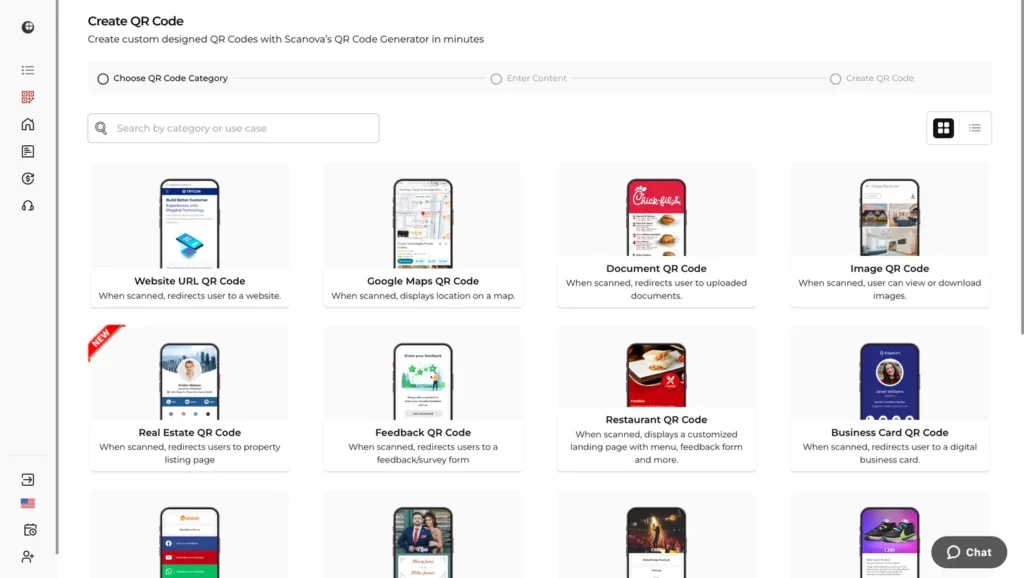
Step 3: Customize and brand it (optional)
- Add your company logo, change colors, or use a “Scan to Win” frame to make the code attractive and trustworthy
- Branded codes perform better because they look official
Step 4: Print or share the QR Code
- Place it on banners, posters, receipts, product packaging, or event invites
- If you’re running an online campaign, share it in emails or on social media
Step 5: Collect entries in real time
- As participants submit, responses are logged instantly
- You can export this data to a spreadsheet for easy management
Step 6: Run your awesome QR Code lucky draw
- Use any online randomizer tool (like random.org) to pick a winner from the list
- Announce it live or send notifications directly
Pro tip: If you expect a large number of entries, use a dynamic QR Code. This allows you to update the form link later without reprinting the code and gives you scan analytics to track participation.
D. 12 Awesome real-world examples and success stories of QR Code lucky draws
Brands across industries have experimented with QR Code lucky draws and interactive promotions to capture attention and boost engagement.
Here are some campaigns worth noting and lessons you can apply.
1. Retail promotions on packaging
Some FMCG brands turn their product packaging into a gateway to prizes. Customers simply scan the QR Code on a bottle, snack pack, or carton and submit their details to join a lucky draw.
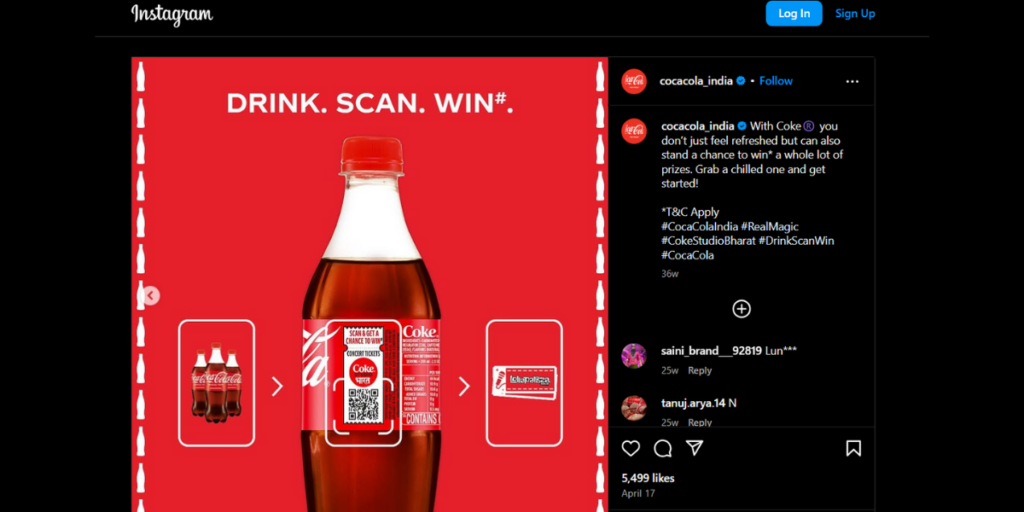
This makes the packaging itself a marketing channel and drives repeat purchases. Coca-Cola, for example, has run several “scan to win” promotions where bottle labels carried QR Codes linking to prize entries (source).
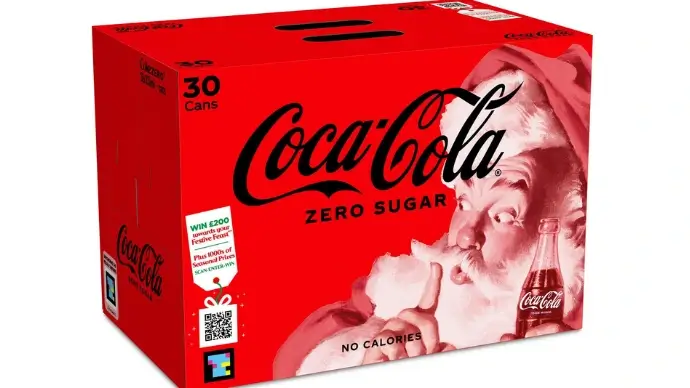
Coca-Cola also ran a QR Code lucky draw as part of its summer marketing campaign. Customers who purchased a Coke could scan the QR Code on the bottle to enter a draw for various prizes, including beach vacations and gadgets.
The campaign saw a significant increase in sales and engagement, with thousands of participants scanning codes and sharing their experiences on social media.
2. Nike’s product launch
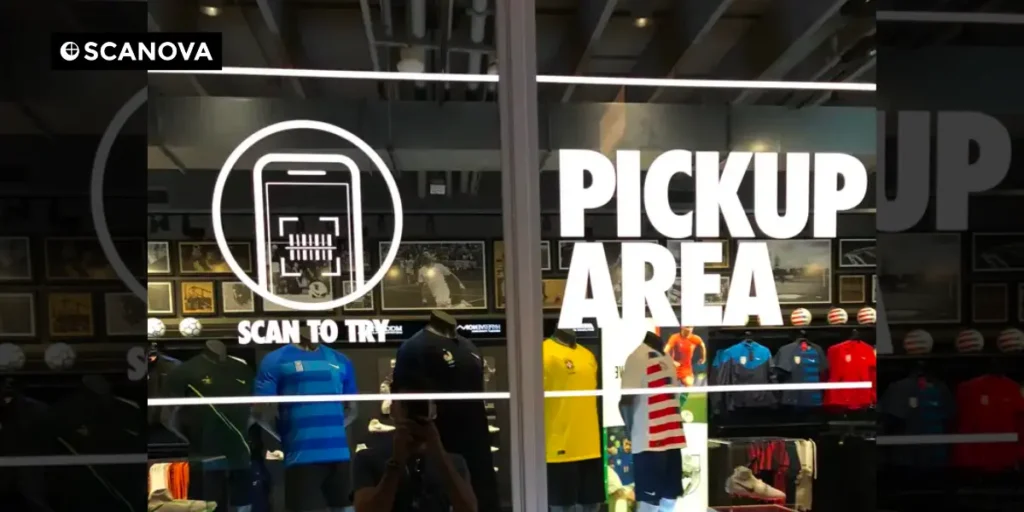
To promote a new line of sneakers, Nike used QR Codes in a scavenger hunt. Participants scanned codes found in various locations to collect points and win exclusive access to purchase the new sneakers.
The campaign generated significant buzz and increased foot traffic to Nike stores.
3. Poppi Soda’s Super Bowl sweepstakes
In 2025, U.S. soda brand Poppi tied a sweepstakes to the Super Bowl, one of the biggest sporting events of the year. Fans could scan QR Codes in store displays or visit the campaign site to enter.

The grand prize was huge: two Super Bowl tickets plus a $7,000 travel stipend. Participants could even enter once per day, keeping them engaged throughout the two-month campaign (source).
The mix of an aspirational prize, multiple entry opportunities, and cultural relevance made this campaign especially powerful.
4. Britannia Winkin’ Cow’s interactive cricket campaign
In India, Britannia added QR Codes to its Winkin’ Cow milkshake bottles during festive season campaigns.
Scanning the code launched an AR cricket game where users could play and win rewards. By tapping into cricket, an obsession in India, the brand turned an ordinary milkshake into an interactive experience (source).
Winkin’ Cow has since become a ₹100 crore brand, with interactive promotions playing a role in its growth (source).
5. Corky’s BBQ drive-thru surprise
In the U.S., Corky’s BBQ placed QR Codes in its drive-thru lanes. Customers who scanned could enter a quick draw and sometimes won an instant dessert.
This “surprise and delight” tactic turned an everyday transaction into a memorable moment, while also collecting valuable customer data (source).
6. KFC’s receipt-based QR Code contests
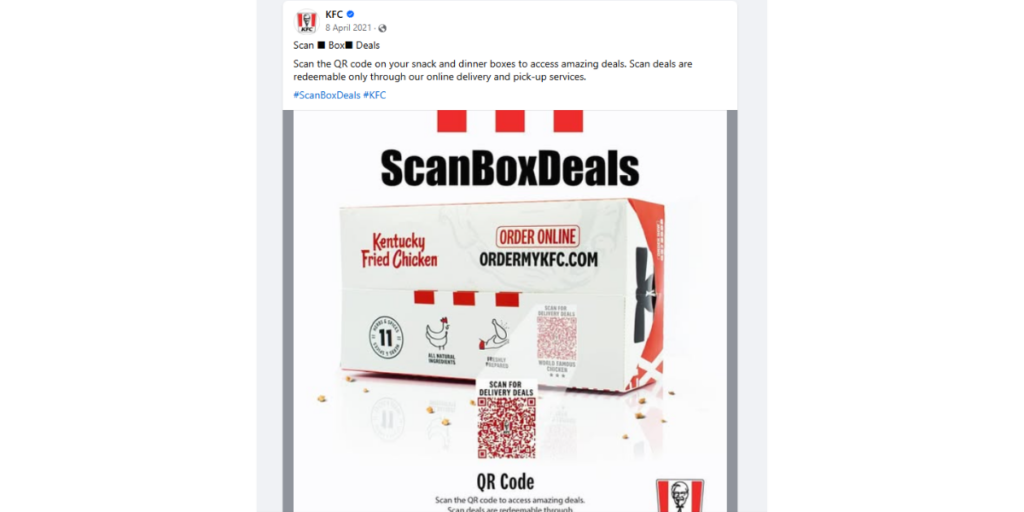
KFC uses QR Codes printed on receipts and boxes as part of their lucky draw campaigns. Customers are encouraged to scan the code, which directs them to a website to register with their purchase details.
Prizes often include free meals or discounts on future purchases. This approach boosts customer engagement while encouraging repeat visits.
7. Nestlé – Scan to win weekly rewards
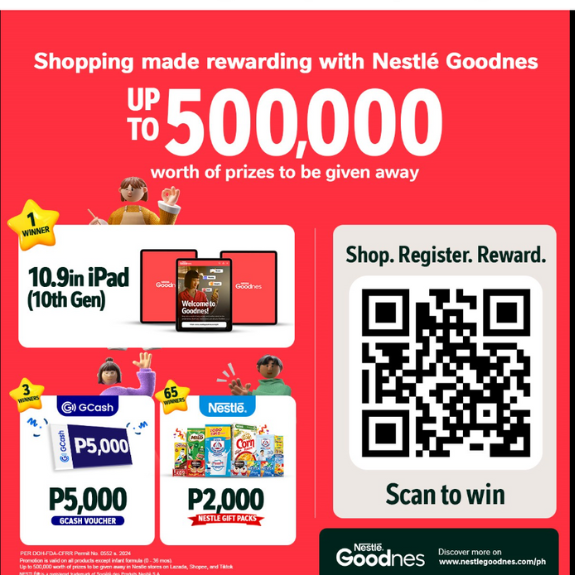
Nestlé has conducted campaigns where QR Codes are printed on product packaging.
Upon scanning, users are taken to a microsite to input their purchase details to win weekly prizes, such as electronics or grocery vouchers.
These campaigns drive product sales and create excitement among customers.
8. Burger King – QR Codes for Sweepstakes
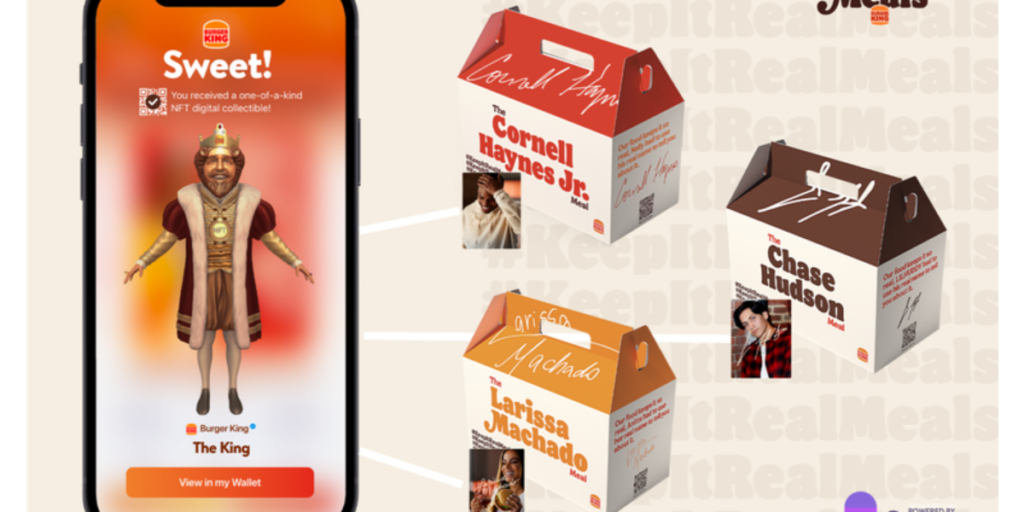
Burger King placed QR Codes on their meal packaging to promote a lucky draw campaign. Scanning the code allowed customers to register for a sweepstake to win exclusive rewards like free meals, gift cards, or even gadgets.
The seamless integration of the QR Code with the dining experience made it easy for customers to participate.
9. PepsiCo – Festival-themed lucky draws
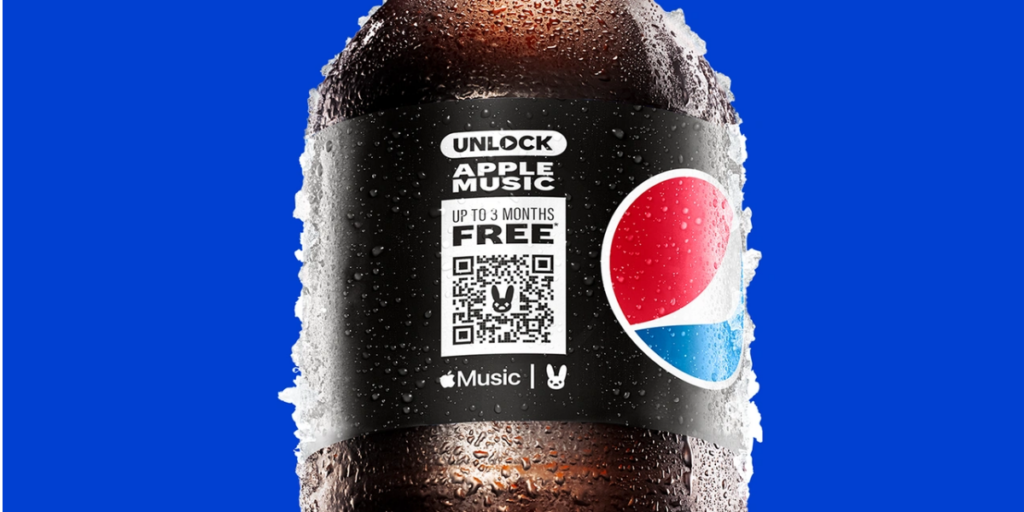
PepsiCo has utilized QR Codes on its beverage cans and bottles during festive seasons for fun lucky draw events.
Scanning the code redirects users to an interactive webpage to spin a virtual wheel or open a mystery box for instant prizes.
This gamified approach enhances customer interaction and adds fun to the campaign.
10. Samsung – Product launch campaigns
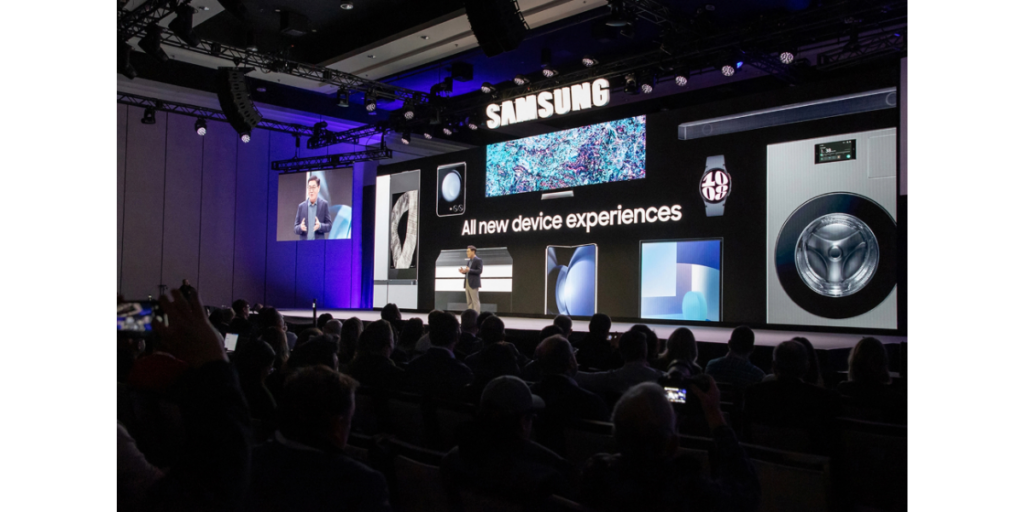
Samsung has integrated QR Codes in its product launch events, especially for new smartphones.
Customers attending the launch or purchasing the product can scan the QR Code to enter a lucky draw for exclusive Samsung merchandise or accessories.
This strategy not only drives attendance but also promotes product visibility.
11. Starbucks – Holiday lucky draw via App QR Codes
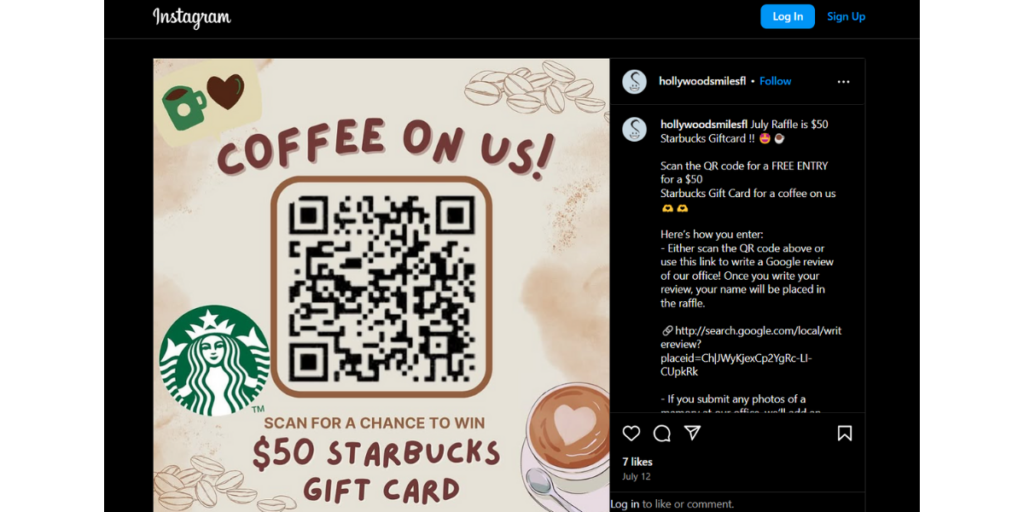
Starbucks runs seasonal campaigns where customers earn entries into a lucky draw by scanning QR Codes through the Starbucks app after each purchase.
Prizes range from free drinks to limited-edition collectibles. The app-based integration ensures loyalty while tracking customer participation.
12. Event and trade show giveaways
At live events, QR Codes often appear on banners, tickets, or booths. Attendees scan them to enter draws for backstage passes, merchandise, or discounts.
Because people are already in a high-energy environment, scan and entry rates tend to be higher.
What you can learn from these examples
- Tie campaigns to culture or events. Poppi used the Super Bowl, Britannia used cricket, and festivals. This makes the campaign timely and relatable
- Make entry frictionless. Keep forms short and mobile-friendly. The easier it is, the more people will participate
- Use physical and digital together. QR Codes on packaging, posters, or tickets can be promoted further via social media or email
- Offer prizes that feel aspirational. Big rewards like trips or event tickets drive buzz, but even smaller “instant win” prizes can create delight
- Build transparency and trust. Announce winners publicly or use a randomizer tool to ensure fairness
- Add creativity beyond the draw; AR games, instant wins, or gamified landing pages make the experience fun and shareable
E. Best practices to maximize engagement with QR Code lucky draws
A QR Code lucky draw is only as good as the thought put into its execution. If you want high participation and positive brand impact, here are proven practices to follow:
1. Place your QR Codes where people can’t miss them
Visibility is everything. Don’t just tuck a QR Code in a corner; make it bold and prominent on posters, packaging, banners, or tickets.
For offline events, position them near entrances, checkout counters, or booths where people naturally stop. Online, add them to social posts and websites.
2. Use a clear, compelling call-to-action (CTA)
People won’t scan a QR Code unless they know what’s in it for them. Phrases like “Scan to Win a Free Trip” or “Enter Now for Weekly Prizes” are far more effective than a bare QR image. Pair the code with short, punchy text and a prize visual to grab attention.
3. Keep entry quick and simple
The more fields you ask participants to fill out, the fewer will complete the process. Stick to essentials: name + one contact method (email or phone). You can always collect more data later through follow-ups.
4. Offer prizes that resonate with your audience
A prize should feel worth the effort. Poppi’s Super Bowl tickets worked because fans already cared about the event.
Similarly, a retail store might offer gift vouchers, while a university fest could give free concert passes. Align rewards with what excites your target audience.
5. Use dynamic QR Codes for flexibility
Dynamic QR Codes let you update links even after printing. If you need to change your entry form or landing page midway, you won’t need to reprint materials.
They also give you analytics, scan counts, device types, and locations, so you can track campaign performance in real time.
6. Test before going live
Nothing kills trust faster than a QR Code that doesn’t work. Scan it across different devices and connections before launch. Check if the form is mobile-optimized, loads fast, and submits without errors.
7. Limit duplicate entries for fairness
If you want one entry per person, set restrictions in your form (like requiring an email verification or using unique codes per ticket). This prevents abuse and keeps the draw credible.
8. Promote across multiple channels
Don’t rely on just one touchpoint. Combine offline placements (flyers, packaging, event banners) with online pushes (social posts, email blasts). The more surfaces your QR Code appears on, the bigger your entry pool.
G. FAQs on QR Code lucky draws
1. Can I create a QR Code lucky draw for free?
Yes. You can generate a basic QR Code for free using tools like Scanova’s free generator. However, if you need advanced features like dynamic editing, branding, and scan analytics, you’ll need a paid plan.
2. How do I ensure fairness in a QR Code lucky draw?
Use an online randomizer tool to pick winners from your entry list. Announce results publicly, via social media, email, or live events, to build trust and transparency.
3. Can participants enter multiple times by scanning the QR Code repeatedly?
That depends on how you design the form. You can limit duplicate entries by requiring unique details (like verified emails) or by restricting one entry per device.
4. What’s the best tool to create a QR Code lucky draw?
A QR Code generator like Scanova is a good choice. It allows you to create dynamic QR Codes, customize designs with branding, and track scans.
You can link it to forms (Google Forms, Typeform, or Scanova’s Custom Page) to collect entries.
5. What is the Thumbs Up QR Code Lucky Draw?
Coca-Cola’s Thumbs Up brand in India has run QR Code-based contests where participants scan a code on packaging or promotional material to enter a lucky draw.
These campaigns typically offer prizes like vouchers, merchandise, or event tickets. They show how big brands use QR Codes to make promotions interactive.
6. How do I create a QR Code lucky draw free of cost?
You can:
- Create a free form using Google Forms.
- Generate a free QR Code that links to it.
- Share or print the code for participants to scan.
- This works for small-scale giveaways. For larger campaigns, use a dynamic QR Code generator for added control.
7. Where should I place QR Codes for maximum participation?
Put them in high-traffic spots, store entrances, checkout counters, posters at events, or product packaging.
Online, share them via email newsletters, websites, and social posts. Always pair the code with a strong CTA like “Scan to Win.”
8. What types of prizes work best for QR Code lucky draws?
Prizes that are aspirational and relevant to your audience work best. For example, tech gadgets, event passes, or brand vouchers.
Smaller instant rewards (like free desserts or discount codes) also drive engagement.
9. Do I need coding skills to set up a QR Code lucky draw?
Not at all. Most QR Code generators are user-friendly. You just paste your form or landing page link, generate the code, and share it. No technical expertise is required.
Conclusion
A lucky draw should feel exciting, not complicated. By adding a simple QR Code, you can turn a traditional paper-based giveaway into a modern, seamless experience.
Participants scan and submit their details, and you collect entries instantly without the mess of slips or manual sorting.
From retail promotions to large-scale events, QR Code lucky draws make participation effortless, increase engagement, and keep the process transparent.
They also give you the flexibility to update campaigns, track scans, and brand the experience to match your business.
If you’re planning your next contest or giveaway, it’s worth making it digital. With a tool like Scanova, you can create dynamic QR Codes, customize them with your brand, and get detailed analytics—all in just a few clicks.
👉 Ready to try it out? Create your QR Code lucky draw with Scanova today.
